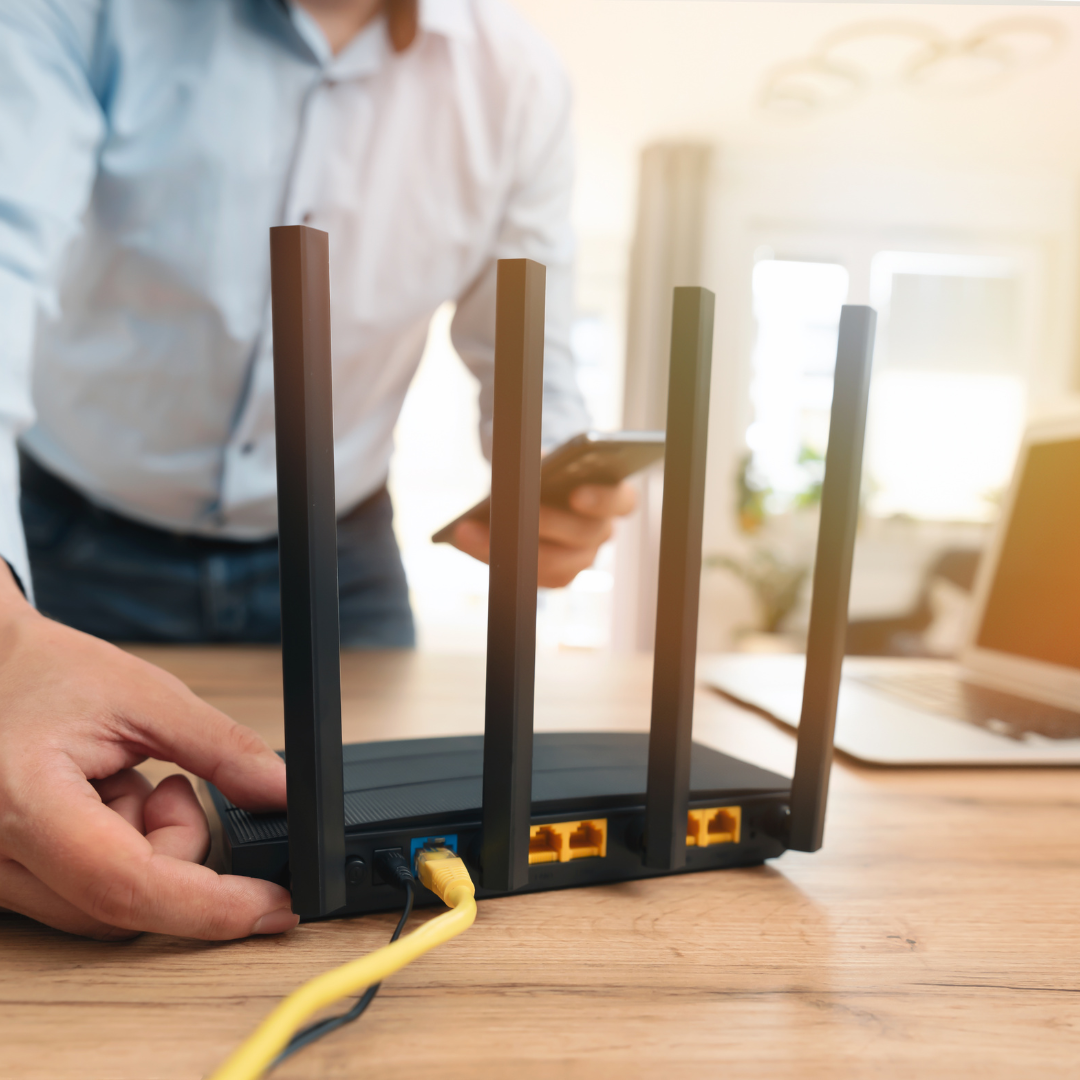LTE Data & Network Failover for South African Businesses
2025-11-19 16:24:25

A clear technical guide to resilient connectivity, SD-WAN, and redundant internet options.
For most South African businesses, the right connectivity stack is business fibre as the primary link, LTE (4G) data as automatic failover, and SD-WAN as the application-aware overlay.
Reliable connectivity is core to productivity in every South African business. Unfortunately, fibre downtime is common due to cable theft, accidental infrastructure damage, power instability, and severe weather. To stay operational, organisations increasingly rely on LTE data failover and SD-WAN-based resilience to ensure continuity when primary links go down.
LTE failover provides an automatic secondary path so payments, cloud platforms, voice, video, and business applications remain available, without manual intervention or complex workarounds.
What Problem Does Network Failover Solve?
Even short outages disrupt business operations:
- Payments and point-of-sale systems stop processing
- Customer tickets and service queues freeze
- Meetings drop mid-call
- Cloud applications become inaccessible
- SLA targets slip and backlogs build immediately
Failover addresses this at an architectural level, not a reactive one.
A resilient design includes:
- Two independent connectivity paths (primary fibre + LTE/5G backup)
- Continuous link monitoring
- Automatic detection and immediate switchover
- Seamless return to primary once stable
- A documented runbook and reporting cycle
This prevents lost revenue, operational delays, and customer frustration without adding unnecessary complexity.
How LTE Failover Works
Modern edge routers and SD-WAN devices continuously probe the primary fibre link using metrics such as:
- Packet loss
- Latency
- Jitter
- Interface availability
When thresholds are breached, traffic is automatically routed through the LTE backup data connection. Essential applications, such as VoIP, CRM, productivity suites, and finance systems, receive priority through policy-based routing.
In SD-WAN architectures this behaviour is often described as SD-WAN failover.
Once the primary fibre link recovers, the router performs a graceful, automatic failback with no user intervention.
Together, these mechanisms form the basis of internet failover and WAN failover for backup internet for business, supporting dual-WAN routing and resilient business connectivity.
Design Summary
- Primary: Business fibre for speed, throughput, and stability
- Secondary: LTE or 5G data for continuity during incidents
- Control: Dual-WAN or policy-based routing / SD-WAN
- Recovery: Automated, no-touch failback
This is the practical application of redundant internet access, dual-WAN routing, and resilient business connectivity.
When Should a Business Implement Failover?
Failover is recommended when business operations depend on:
- Cloud-first workflows (Microsoft 365, Google Workspace, CRM, ERP, accounting systems)
- Voice and video quality for sales, support, or call centres
- Branches that process payments or run service desks
- Contracts with uptime penalties or SLAs
- Environments with repeat fibre outages or long repair times
- Remote, pop-up, or temporary sites relying on LTE business connectivity
If downtime causes real business impact, resilience is no longer optional.
Choosing the Best Primary–Backup Connectivity Mix
Standard SME Setup
- Primary: Business fibre
- Backup: LTE or 5G failover
This combination provides the best balance of cost, performance, and uptime. In practice this acts as LTE backup for the fibre at branch level.
Multi-Site Operations
Large or distributed organisations benefit from SD-WAN, which adds:
- Intelligent path selection
- Real-time jitter and packet-loss mitigation
- Prioritisation of voice and critical apps
- Automatic tunnel healing
- Seamless user experience across sites
For a comparison of fibre and LTE strengths, see fibre vs LTE for business connectivity.
When comparing fibre vs SD-WAN, treat fibre as the access layer and SD-WAN as the control layer that manages how your business traffic uses all available links.
Sizing Data and Ensuring Branch Reliability
Correct sizing ensures predictable costs and stable performance during outages.
1. Perform a coverage check
At each branch, test multiple mobile networks to identify the most stable LTE or 5G provider.
2. Right-size LTE data
Use the formula:
(Estimated failover hours × active throughput) + 20% buffer
For multi-branch organisations, data pooling smooths usage spikes across sites.
3. Stabilise weak signals
Where coverage is marginal, deploy a directional or high-gain antenna to improve performance and reduce jitter.
Protecting Voice and Video During Failover
Voice and video are highly sensitive to:
- Jitter
- Packet loss
- Latency spikes
To maintain call and meeting stability:
- Use SD-WAN or advanced policy-based routing
- Prioritise VoIP and conferencing traffic
- Reserve a small, stable bandwidth allocation for real-time applications
- Route voice over the healthiest available path at all times
This ensures conversations don’t drop or degrade during failover events.
Operating, Testing, and Maintaining Resilience
Resilience must be tested proactively, not only during emergencies.
Monthly Maintenance Checklist
- Run after-hours failover tests
- Validate switchover speed
- Check session persistence for cloud apps
- Confirm automatic return-to-primary works
- Review usage alerts to manage LTE costs
- Update and maintain a simple failover log
Small improvements each month ensure the system remains effective and predictable.
Connectivity vs Power: The South African Challenge
Even the best fibre link is useless if the:
- ONT
- Router
- Switch
- Access point
…are offline due to power cuts or grid instability.
A resilient design considers power and connectivity together:
- Provide UPS/inverter backup for all networking equipment
- Size the LTE data plan for extended outage events
- Confirm mobile coverage in the building during power loss
For broader insights, see current trends in South African internet performance during load-shedding.
Next step: Check your resilience
If you would like a practical view of how fibre, LTE and SD-WAN could work together across your sites, request a callback from our connectivity team.
We will check coverage, review your current setup, and suggest a failover design that fits your risk and budget.
FAQs
LTE failover vs fibre vs SD-WAN?
Fibre is primary for speed and SLAs; LTE provides instant backup during line faults; SD-WAN automates fast failover and steers apps around brownouts across both links.
Is LTE good failover for a business?
Yes. With coverage and fast activation, LTE maintains connectivity during fibre cuts when configured on dual‑WAN or SD‑WAN devices.
Do I need SD-WAN for failover?
Dual‑WAN can switch links, but SD‑WAN adds app‑aware steering, brownout detection and central policy—better for multi‑site reliability.
Fibre vs LTE for offices?
Use fibre as the main link for consistent, symmetric performance; keep LTE as a secondary path or interim connection.
What’s dual‑WAN failover?
Two links on one edge device; if the primary fails, traffic moves automatically to the secondary.
Will failover help during load‑shedding?
Yes—if your CPE, router and LTE unit are on UPS and policies handle power‑related link loss.
How fast is LTE compared to fibre?
LTE speeds vary and are often asymmetrical. Fibre is more consistent and comes with business SLAs.
Does SD‑WAN replace MPLS?
Often it reduces MPLS dependence by securing traffic over business Internet and bonding multiple links for resilience.
How fast does failover occur?
Typically within seconds. Priority applications continue first, minimising disruption.
Will LTE data costs spike during outages?
Not if sized correctly. Restrict background updates during incidents and schedule sync jobs after hours.
What if a branch has weak LTE coverage?
We test all major networks, apply directional antennas, or recommend alternative backup paths if needed.
Do staff need to take action during cutover?
No. Switchover and failback are automatic; teams continue working normally.
Can finance and IT see what happened?
Yes. Monthly reports summarise:
- Number of incidents
- Time spent on backup
- Data usage
- Improvements made
For deeper technical context, refer to ICASA broadband guidelines, MEF 70 and MEF 70.1 SD-WAN standards, and LTE/4G specifications from 3GPP and ETSI; together they help define what “good” looks like for resilient business connectivity design in South Africa.


